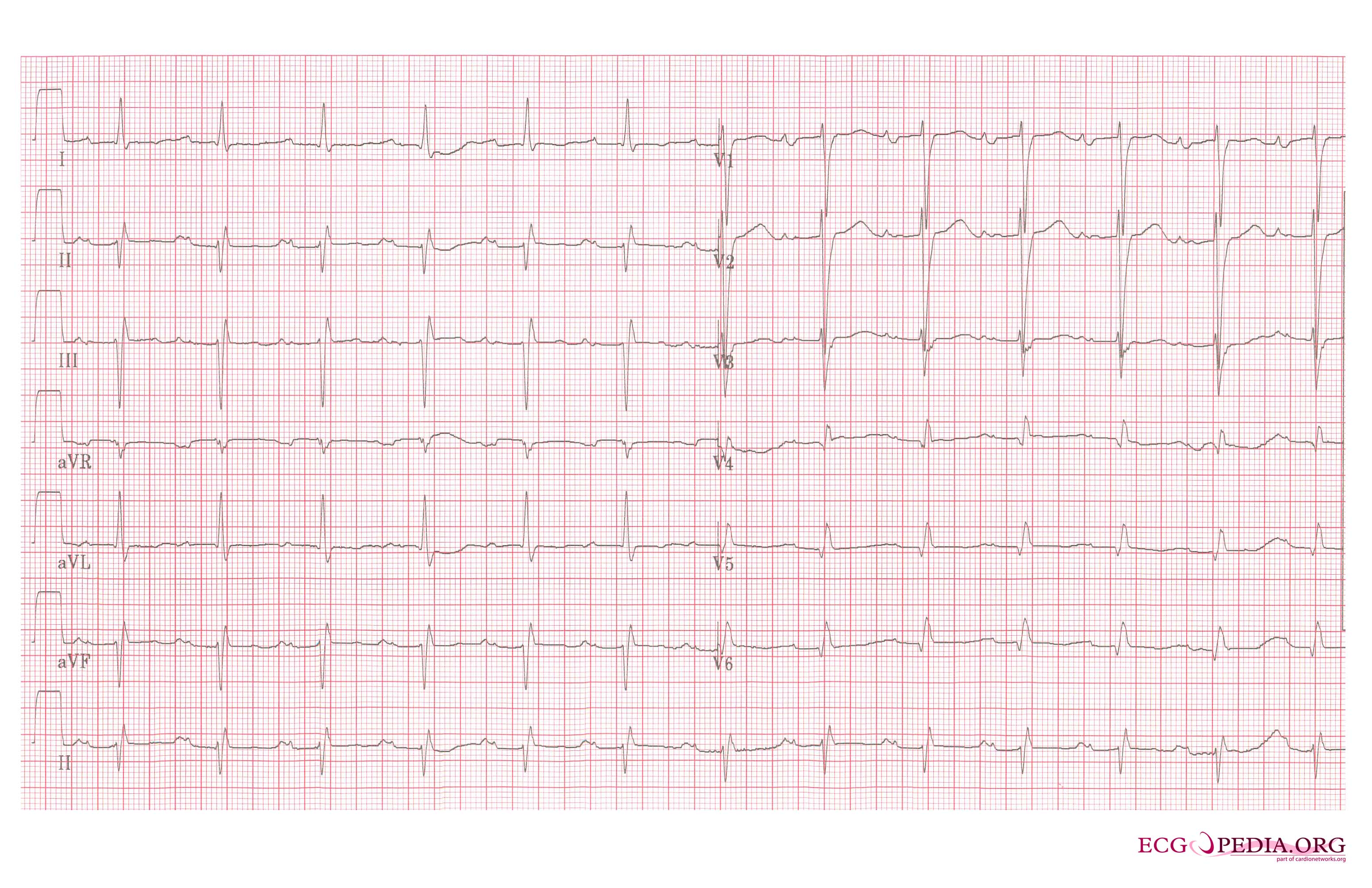Pharyngitis electrocardiogram
|
Pharyngitis Microchapters |
|
Diagnosis |
|---|
|
Treatment |
|
Case Studies |
|
Pharyngitis electrocardiogram On the Web |
|
American Roentgen Ray Society Images of Pharyngitis electrocardiogram |
|
Risk calculators and risk factors for Pharyngitis electrocardiogram |
Editor-In-Chief: C. Michael Gibson, M.S., M.D. [1]; Associate Editor(s)-in-Chief: Venkata Sivakrishna Kumar Pulivarthi M.B.B.S [2]
Overview
There are no specific EKG findings associated with pharyngitis, but the complications of pharyngitis may be associate with cardiac rhythm abnormalities.
Electrocardiogram Findings
Electrocardiogram Findings Associate with Rheumatic Heart Disease
ECG changes depend on the structures involved and the extent of cardiac damage. The following ECG changes may be noted in patients with rheumatic fever:[1]
- Sinus tachycardia or bradycardia depending on vagal tone
- Prolongation of PR interval
- Variable degree of AV conduction block
- P mitrale secondary to mitral valve abnormalities

- Mitral valve abnormalities which may lead to development of atrial flutter or atrial fibrillation
- T-wave inversions which may be noted in leads I, II, and IV suggestive of pericardial involvement
- ST segment elevation may also be present in leads II, III,aVF and V4 to V6 in patients with acute pericarditis
Electrocardiogram Findings Associate With Diphtheria
ECG in patients with diphtheria can be normal. However, in patients with diphtheria myocarditis, a wide range of abnormalities related to conduction and rhythm may be seen. Some of the ECG findings in diphtheria myocarditis include:[3][4][5]
- Prolonged PR or QT intervals
- Alterations in the ST segment, which can be elevation or depression
- Alterations in the T wave
- Atrioventricular block (AV block)
- Bundle branch block (BBB)
- Hemiblock
- Sinus bradycardia
- Arrythmias, such as supraventricular tachycardia (SVT) and ventricular tachycardia (VT)
Reference
- ↑ SOKOLOW M (1947). "The electrocardiogram in the diagnosis and management of rheumatic fever". Calif Med. 66 (4): 221–6. PMID 20294585.
- ↑ Image courtesy of ECGPedia (2015). http://en.ecgpedia.org/wiki/Short_coupled_Torsades_de_Pointes Accessed on October 19, 2015.
- ↑ BOYER NH, WEINSTEIN L (1948). "Diphtheritic myocarditis". N. Engl. J. Med. 239 (24): 913–9. doi:10.1056/NEJM194812092392403. PMID 18103551.
- ↑ Lumio JT, Groundstroem KW, Melnick OB, Huhtala H, Rakhmanova AG (2004). "Electrocardiographic abnormalities in patients with diphtheria: a prospective study". Am. J. Med. 116 (2): 78–83. PMID 14715320.
- ↑ MORGAN BC (1963). "CARDIAC COMPLICATIONS OF DIPHTHERIA". Pediatrics. 32: 549–57. PMID 14069096.